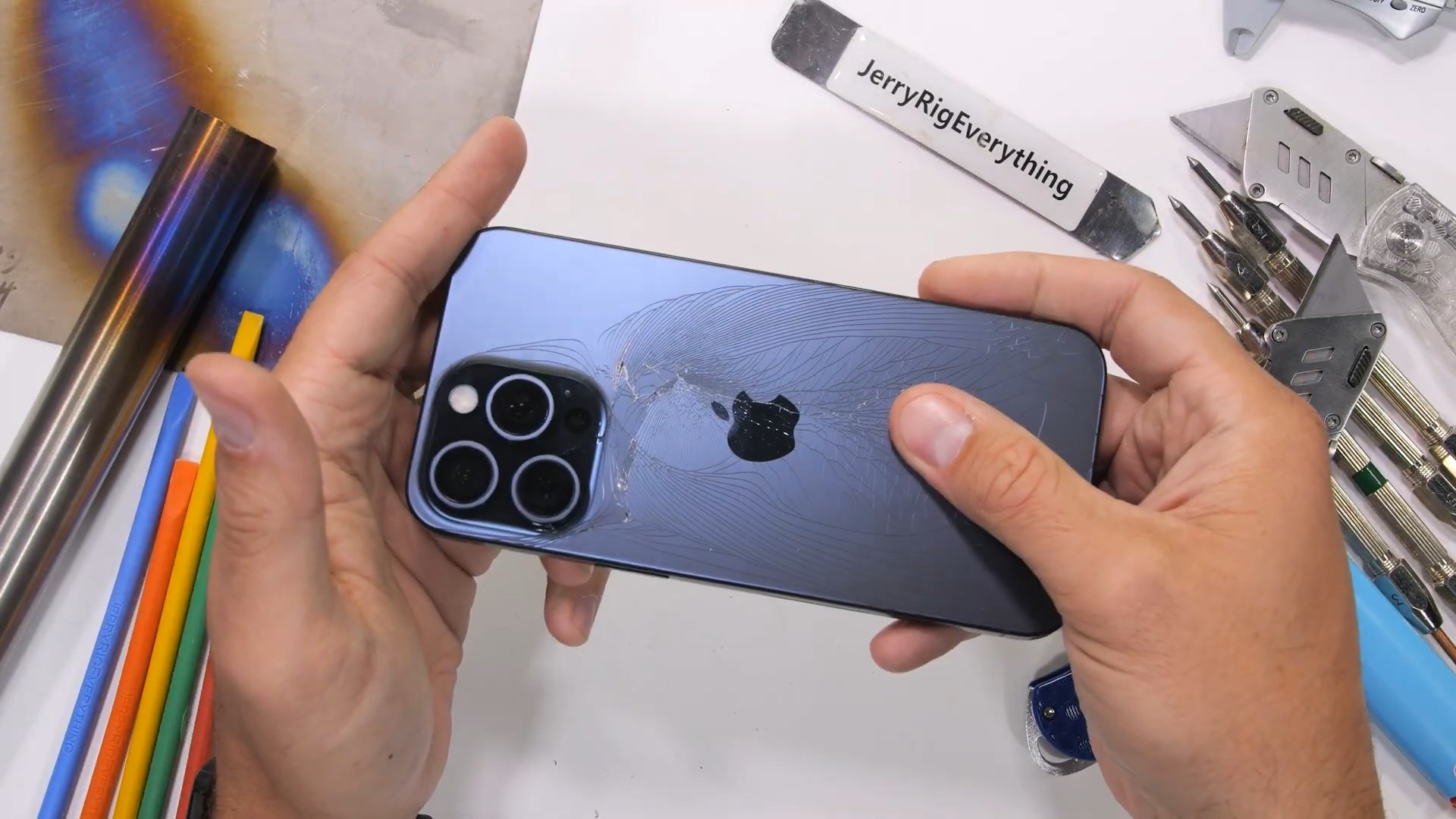Apple recently unveiled its new iPhone 15 Pro and iPhone 15 Pro Max, boasting of a robust chassis design crafted from grade 5 titanium. However, early assessments, including rigorous durability tests, have raised eyebrows over the resilience of this model, particularly the back glass’s vulnerability.

The Titanium Conundrum
Apple’s move to utilize grade 5 titanium was intended to showcase the iPhone 15 Pro models as stalwarts of durability. Titanium’s high tensile strength, theoretically, makes it a stronger alternative to the materials previously used in iPhone designs. Yet, in practice, the new chassis design may be revealing some unforeseen challenges.
In a widely viewed durability test by JerryRigEverything, the iPhone 15 Pro Max was subjected to various trials including scratch testing, heat application, and abrasive contact like sandpaper. Although the titanium body, matte back glass, display, and camera covers held up well against scratches, a more startling revelation came when pressure was applied to the device. With seemingly minimal force, a sharp snap was heard, and the back glass was found to be completely shattered.
Notably, this outcome was unexpected even for Jerry, who commented on the abnormal swiftness of the break, especially for an iPhone, which generally enjoys a reputation for sturdiness.
Another YouTuber, Sam Kohl, conducted a drop test comparing the iPhone 15 Pro and its predecessor, the iPhone 14 Pro. Initial drops seemed innocuous, but as the test progressed, the iPhone 15 Pro displayed substantial damage and was rendered non-functional, while the iPhone 14 Pro continued to operate.
Social Media and User Reactions
The surprising fragility of the iPhone 15 Pro Max’s back glass caused quite a stir on social media. Users expressed their astonishment, with comments highlighting the unexpected nature of the damage, especially given the premium branding and cost associated with Apple’s products.
Seeking Perspective
One point of contention is the representativeness of these tests. While these videos provide visual evidence of potential vulnerabilities, it’s essential to note that the sample size is small. As highlighted by a comment on 9to5mac, using just one or two units for testing doesn’t yield statistically conclusive results. The possibility exists that the tested units could be outliers or have manufacturing defects.
Apple, for its part, has emphasized the merits of the iPhone 15 Pro models. In addition to its purportedly robust construction, the company claims prolonged battery life and improved wireless charging speeds.
Conclusion
While durability tests are not definitive representations of a product’s overall strength, they do provide potential consumers with valuable insights. As it stands, the iPhone 15 Pro Max’s back glass appears susceptible to breaking under certain conditions. However, Apple’s decision to reduce the cost of back glass replacements this year might be a silver lining for concerned users.
In an industry where the race for innovation is relentless, the challenge lies in ensuring that advancements do not come at the cost of fundamental qualities like durability. It remains to be seen how Apple will address these concerns, but for now, potential buyers might want to exercise caution or at least invest in a good protective case.